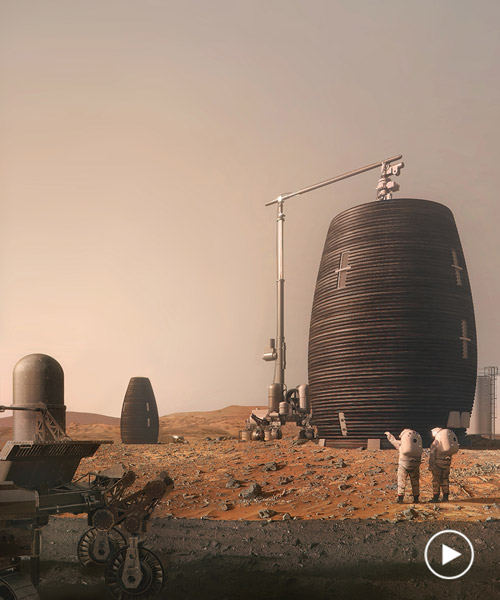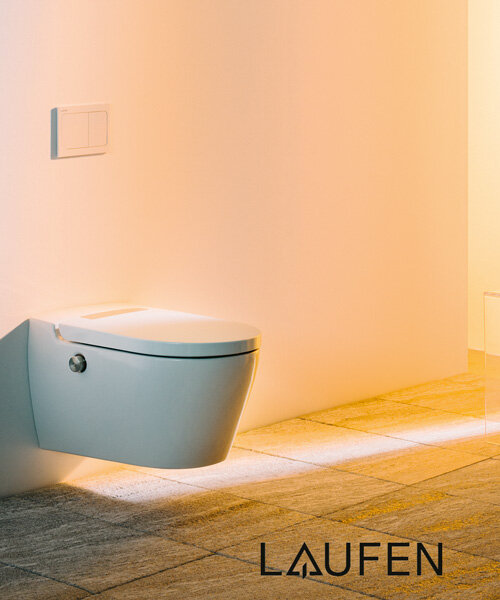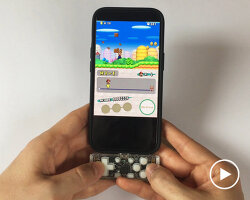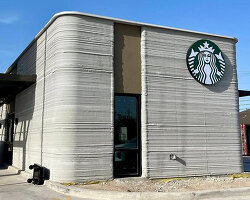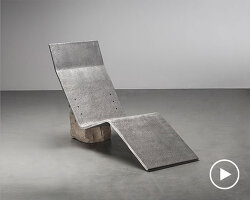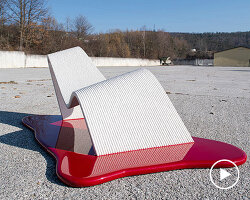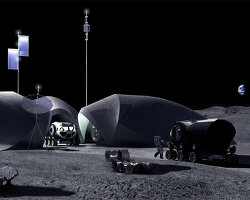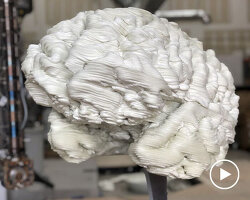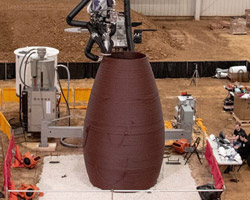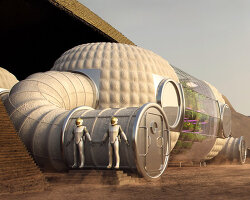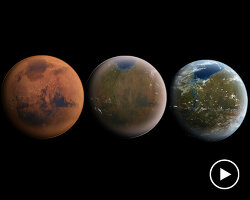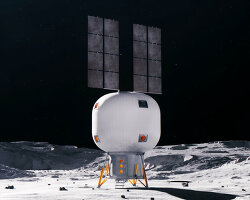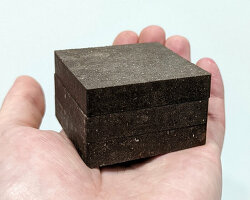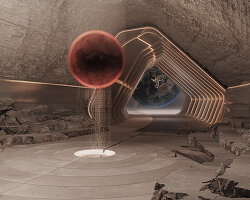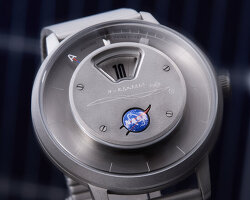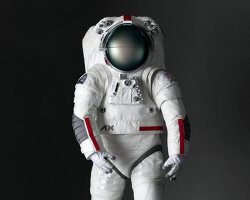new york-based architecture and technology company AI spacefactory presents marsha (MARS HAbitat), a 3D-printed visionary verticle housing on mars. the project marks a radical departure from previous habitat schemes typified by low-lying domes or buried structures. where structures on earth are designed primarily for gravity and wind, unique conditions on mars led to a structure optimized to handle internal atmospheric pressure and structural stresses: a vertical egg-like container with a minimal footprint. this innovation challenges the conventional image of ‘space age’ architecture by focusing on the creation of highly habitable spaces tuned to the demands of a mars mission.
the project was awarded second prize within NASA’s competition and sponsored for future development.

marsha protects humans from the harsh martian environment, including the frigid temperatures, dust storms, and radiation
all renderings by plompmozes
to realize the challenges of building on mars, AI spaceFactory’s solution relies on materials harvested from the martian surface, a technology known as ISRU (in-situ resource utilization). the team is formulating an innovative mixture of basalt fiber extracted from martian rock and renewable bioplastic (polylactic acid, or PLA) derived from plants grown on mars – eliminating the dependency on rockets to transport materials from earth.
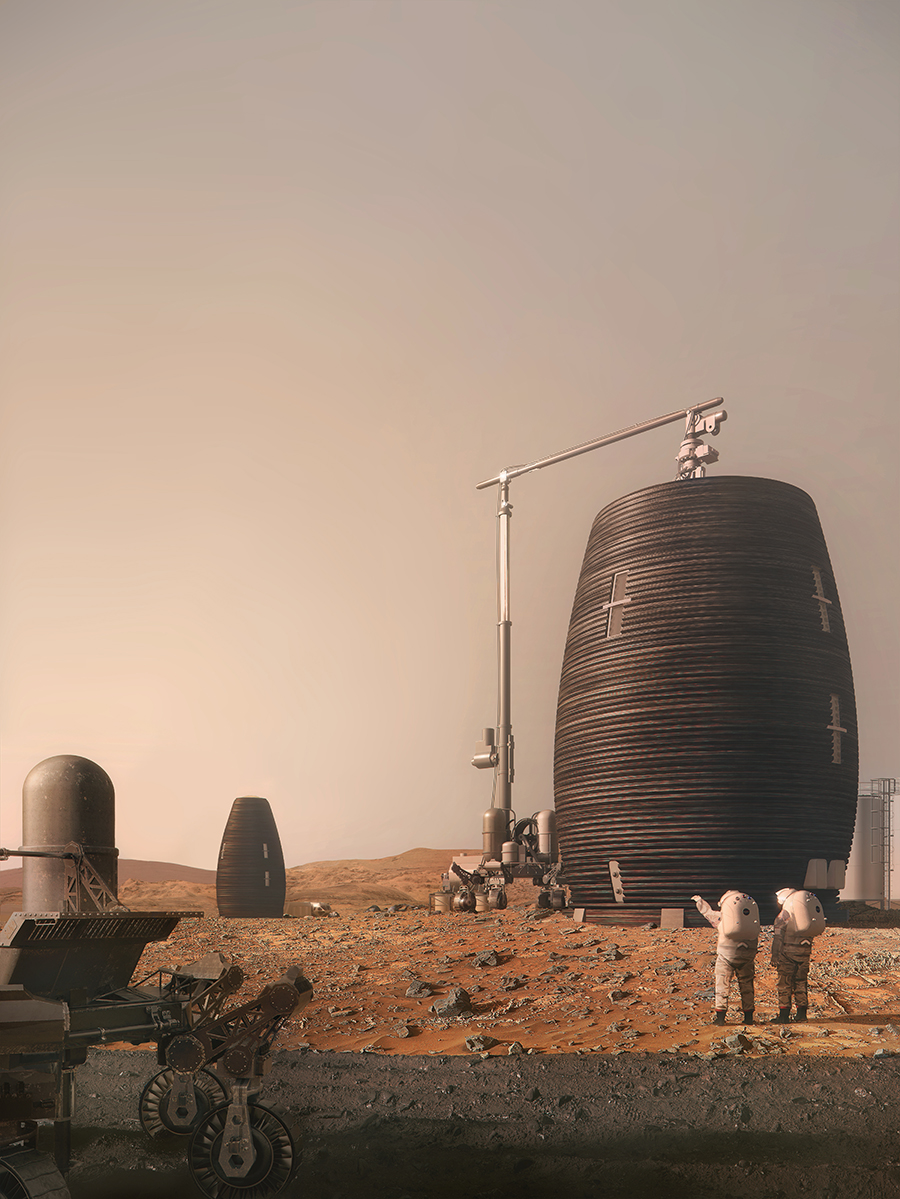
due to its small footprint, marsha can be printed using a stationary machine
marsha stands vertically on the surface of mars — it is intended to advance the state of the art in autonomous 3D printing construction methods, materials technology, and architectural design. it pushes designers to develop human-centric habitats that can be constructed in-situ in preparation for the arrival of the first settlers on mars. the result is a highly credible and evocative home with an alien yet familiar beauty.
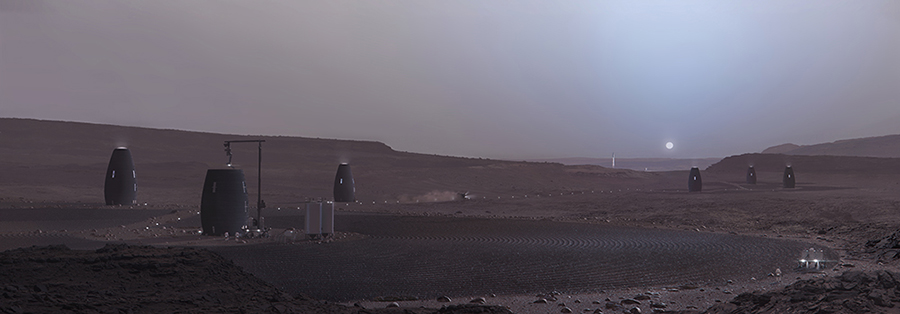
machines would harvest the land for material, leaving patterns in the sand like a rock garden
at ground level, the ‘garage’ is the interface with external systems and exploration activities with a supporting ‘wet lab’. just above is 34 square meters of joint dry lab and kitchen acting as the main hub. on the third level are the individual cabins, sanitation pod, and hydroponic garden. and at the top, the bright ‘skyroom’ is dedicated to informal recreational uses and exercise. each level has at least one window, which together cover the full 360° panorama.
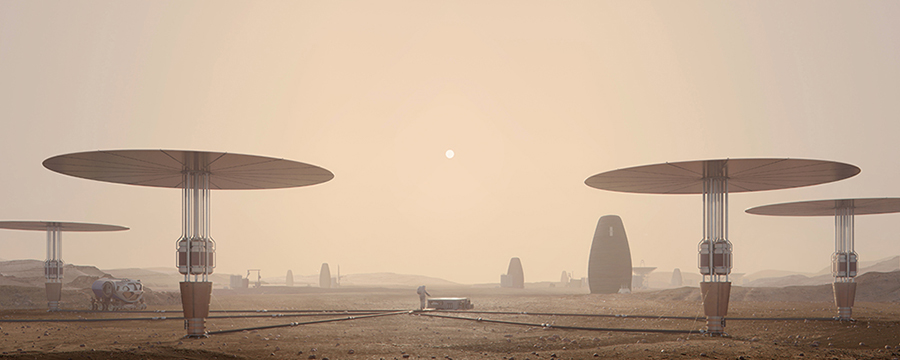
the primary power source for a martian settlement will be nuclear
as in this alien environment, construction sequence and materials must be rethought entirely, the design team formulates a material specifically for 3D printing on mars: basalt fiber-reinforced polylactic acid (bf-PLA). PLA is a strong thermoplastic that is not only mission-recyclable like other plastics but mission-renewable using bioreactors fueled by mission waste. being mechanically comparable to high-performing petrochemical thermoplastics, PLA has countless applications as an expendable material through the full mission timeline. being a bioplastic, it has the added benefit of dual modes of in-situ manufacture: via the fermentation of carbohydrates by bacteria or via chemo-catalysis. on earth, most PLA is derived from polysaccharides produced by plants. the same could be carried out on a future mars settlement, where inevitable plant and other biological waste provide an opportunity to close material/metabolic loops. PLA also has the lowest coefficients of thermal expansion among plastics – crucial to achieving composite action with chopped basalt fiber, which is added for tensile strength (pressure-bearing capacity). basalt fiber, produced from local rock, is also among the most effective insulators known.
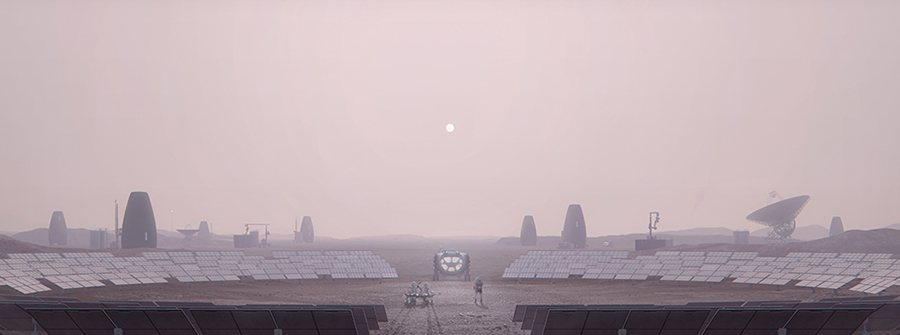
the sun, despite it’s greater distance compared to earth, is a viable power source on the surface of mars
video by spaceFactory
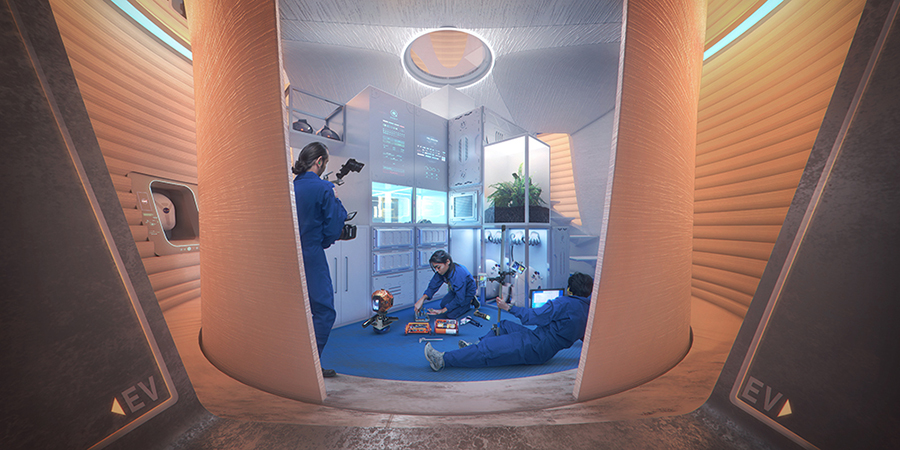
marsha’s two-shell structure creates flexible, hybrid spaces which offer a variety of lighting conditions, privacy, noise levels and uses
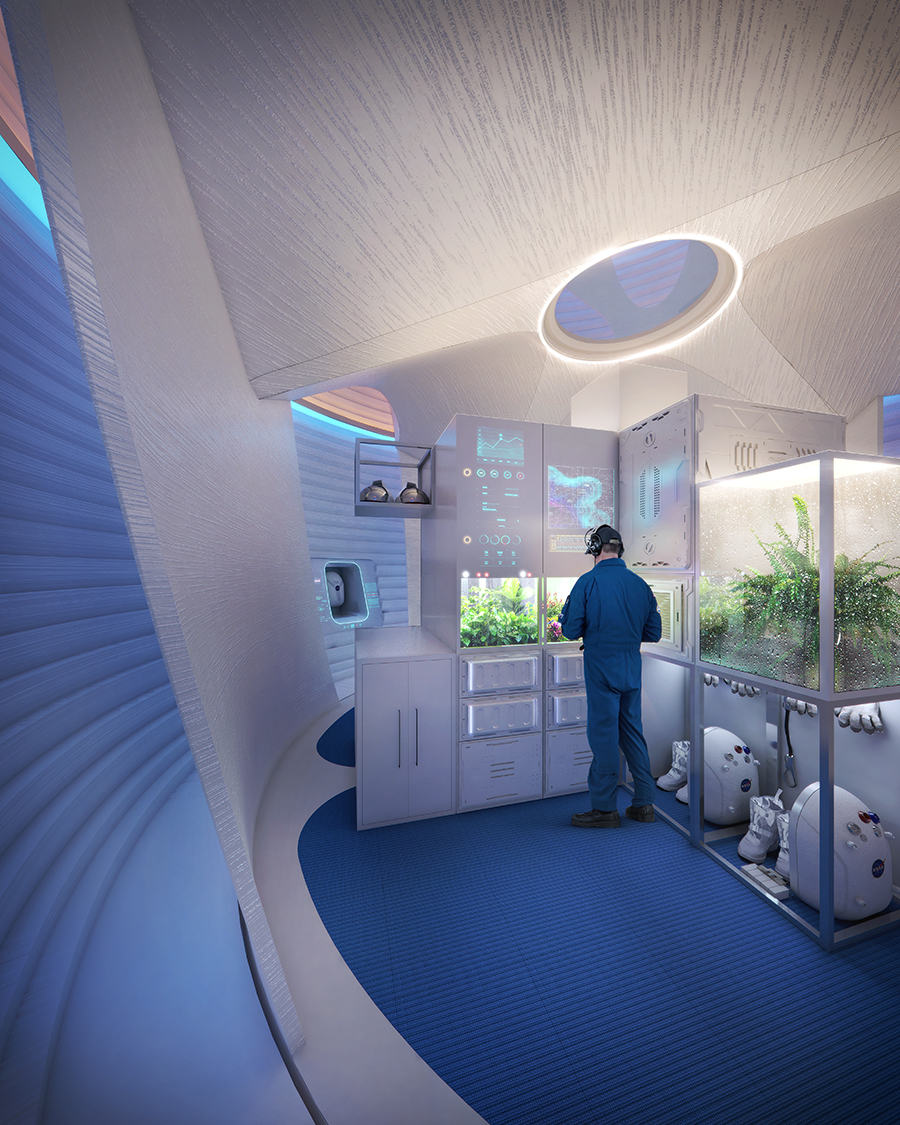
the ground floor features marsha’s wet laboratory in addition to the majority of its mechanical, electrical and plumbing equipment
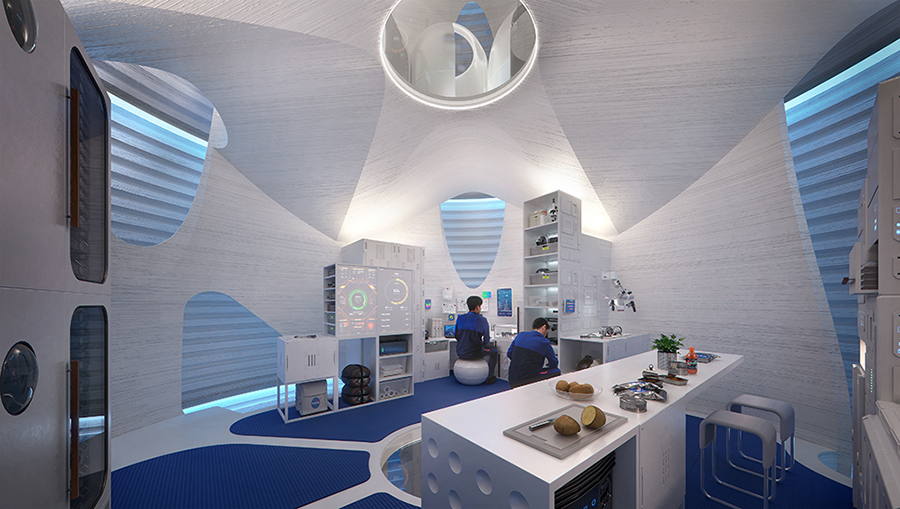
the second floor, acting as the main social hub, features the main laboratory/dry lab as well as the kitchen
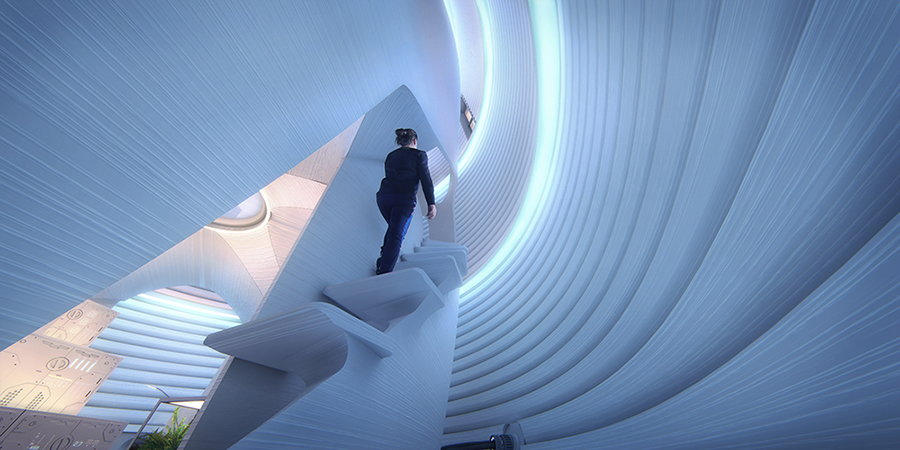
the zone between the two shells functions as a light well and a space for stairs to gentle spiral from level to level
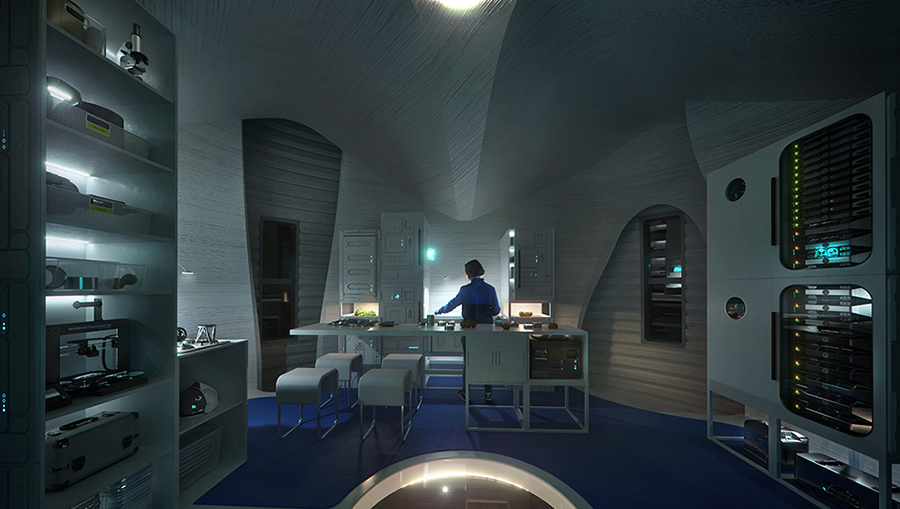
marsha’s architectural design is integrated with its lighting design, which automatically changes in sync with the time of day and the color and intensity of light
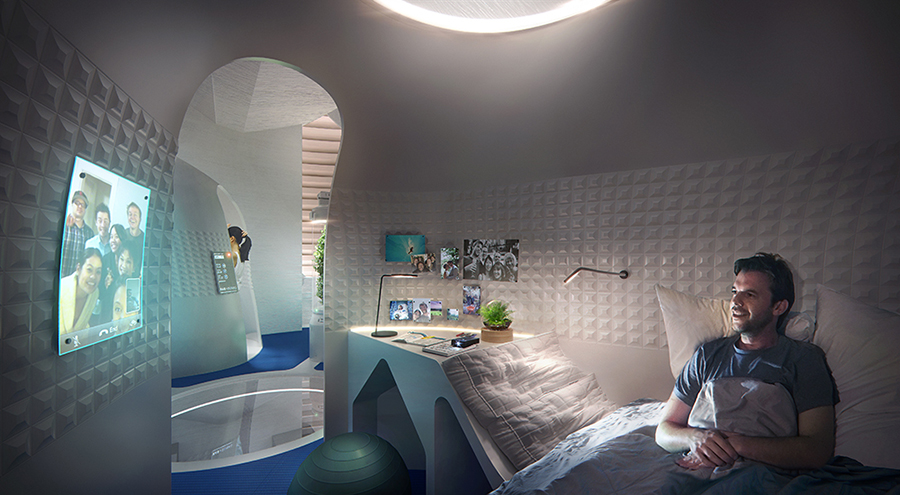
the third level features the most private zones including private sleeping pods and bathroom
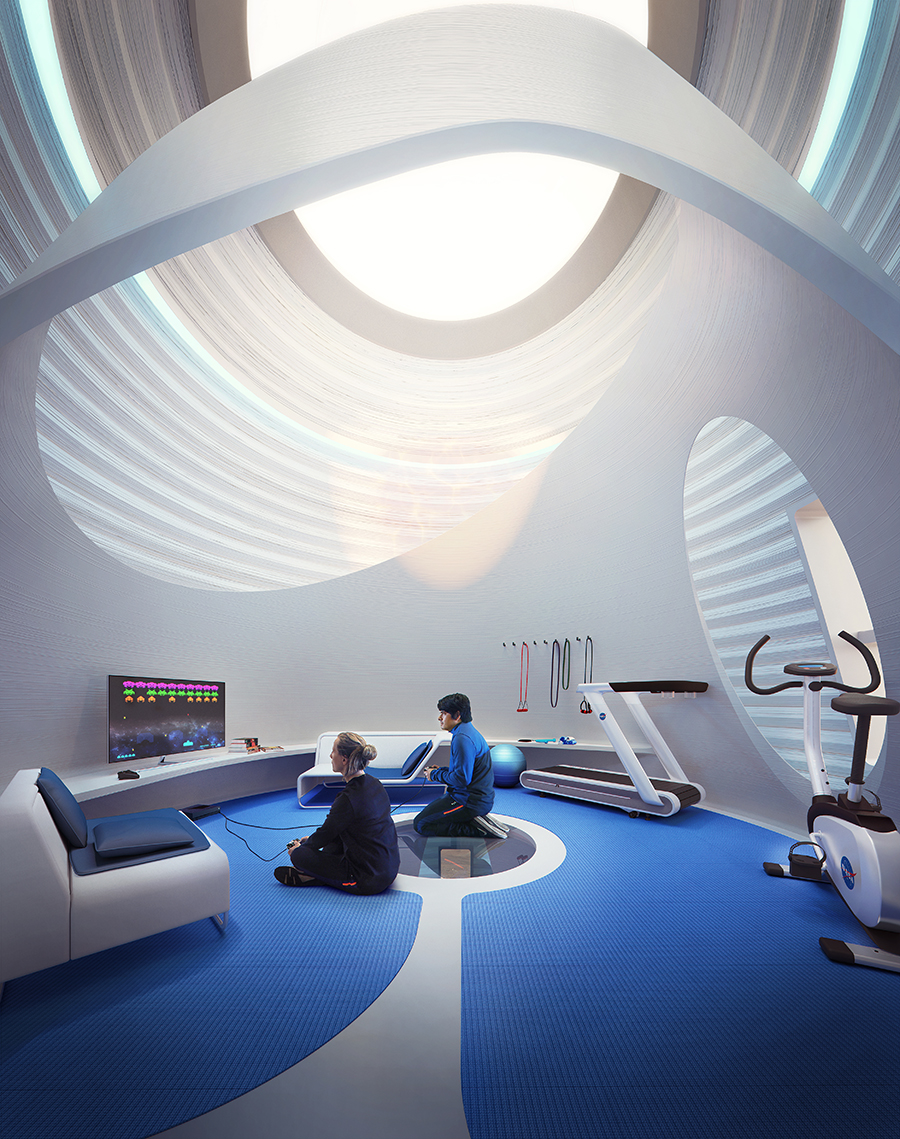
standing below the large water-filled skylight, this level offers a place for the crew to exercise, relax and socialize without tasks
designboom has received this project from our ‘DIY submissions‘ feature, where we welcome our readers to submit their own work for publication. see more project submissions from our readers here.
edited by: maria erman | designboom
